There’s a new ‘big five’ to watch out for in Africa. These aren’t wild beasts like lions, elephants, buffalo, leopards and rhinos. They’re a completely different kind of animal altogether. They’re global fmcg behemoths Nestlé (1), Procter & Gamble (2), Unilever (3), PepsiCo (4) and Coca-Cola (5).
Of course, these multinational players, along with the likes of Diageo (22) and Cadbury - now owned by Mondelez (8) - have operated in Africa for a long time: over 100 years in the case of Unilever. According to this year’s Global 50 - a study carried out exclusively for The Grocer by OC&C Strategy Consultants - 29 of the 50 have already established an active presence in Sub-Saharan Africa beyond South Africa.
“There are not that many big players and as a result the environment is relatively un-competed”
Will Hayllar, partner, OC&C
So what makes Africa attractive, what are the barriers to entry and where do the biggest opportunities lie?
While it’s been well documented that growth in Europe has been sluggish, one reason is that many multinationals are hitting a ‘BRIC’ wall in the emerging economies of Brazil, Russia, India and China.
The problem isn’t so much the economies themselves - though topline growth for the Global 50 in 2012 fell to 5.6% from 7.3% the previous year, according to OC&C, with Europe’s 4% growth once again dragging the overall figure down. In fact, the Global 50 enjoyed rapid growth in Asia and Africa, up a whopping 13% (vs 7% from the Americas).
But as we’ve seen in the past, multinational fmcg suppliers once again struggled to convert heavy investment in emerging markets into increased sales, with the Global 50’s market share across the BRIC nations remaining around the 27% mark - in China it’s even lower at 17% - while local players outmanoeuvred them to grow share.
Share of Global 50 revenue 2012 (%)
● Americas34.9
● Asia & Africa22.3
● EU22
● Other & not classified20.8
Source: OC&C
Outside health & beauty (44% share) and soft drinks (38% share) the Global 50’s position is particular weak category-wise. Dairy share, for example, is at just 18%.
The flipside is that many of the BRIC-based Global 50 players are casting their nets further afield, with South American-based Grupo Bimbo (31) and Marfrig (39) snapping up businesses in the established markets of the US and Europe. And with JBS (7) and Brasil Foods (26) also expanding, Lat-Am power is clearly growing.
In the meantime, the recent acquisition of US-based Smithfields - the world’s largest pork producer by Chinese company Shuanghai - confirms the growing power of China-based powerhouses. Tingyi ranks 51st and will surely break into the OC&C Global 50 next year.
By contrast, Africa looks increasingly enticing. Established multinationals with scale operations are enjoying strong market share positions (higher than their global average) and significantly higher margins. And eye-watering sums of money are being invested (see p44) as it becomes clear recent growth is just the tip of the iceberg.
What’s not to like?
There’s an urbanisation rate to match China [OC&C]. Local competition is limited, politically the continent is as stable as it’s ever been, GDP in many of these nations is increasing thanks to the wealth of natural resources, such as gas and oil, and there are fewer barriers to entry than in BRIC nations like India and China, where overseas investors have to jump through a number of legislative loopholes.
A further attraction is the sheer size of the potential consumer base. By 2050, Africa will account for 20% of the world’s population, with Nigeria alone vying to be the third-most populated country alongside the US. Household consumption rates in many of these countries are already outpacing India, with consumption rates in Angola even outgrowing China over the past five years [EIU/OC&C].
“The African population is growing very fast and is very young,” says Will Hayllar, a partner at OC&C. “There are not really that many big players in the region and as a result the environment is relatively un-competed.
“The Global 50 and other players entering Africa are finding themselves competing against local, less sophisticated players, with Tiger Brands the only African conglomerate with real scale spanning the majority of sub-Saharan Africa. Those players who are in Africa and were early movers are really benefiting, with companies like Unilever, for example, seeing high growth rates and doing really well.”
Unilever originally built its presence in Commonwealth countries like South Africa, Nigeria, Ghana and Kenya, with brands such as Blue Band (margarine), Close-Up (toothpaste), Royco (soups and sauces) and Rexona (deodorants).
Unilever eyes growth
But with about 5% of Unilever’s €51bn turnover coming from Africa, there are big plans to build on this impressive base in the future, according to the head of African operations, Marijn van Tiggelen.

Case study: Tiger Brands
The closest thing to a tiger you will see in Africa comes in the form of Tiger Brands - the region’s largest fmcg group. Founded in South Africa in 1925 as Tiger Oats, the group has manufacturing facilities in South Africa, Zimbabwe, Nigeria, Cameroon, Ethiopia and Kenya.
It owns around 30 brands spanning a number of different fmcg categories - from energy drinks through to packaged food - with some of its best-known products being Albany, Energade and Doom. In 2012 Tiger Brands had a turnover of R22.7bn - roughly $2.6bn - which represented an 11% increase on turnover in 2011. Its operating profit increased 7.1% (circa $394m).
In recent years the listed Tiger Brands has been hitting the mergers & acquisitions trail, making three full acquisitions in 2011 and taking a 63% stake in Nigeria’s second-largest flour milling company, Dangote Flour Mills, in 2012. The next phase in the group’s development is overseas expansion. Its largest international acquisition to date was the £209m purchase of US-based C&T Malt in 2006, but its aim over the medium term is to derive 30% of its revenues overseas through a combination of increased exports and further acquisitions.
Due to its strong recent growth and potential future growth, experts say Tiger Brands is an attractive investment proposition.
“Our overall ambition is to double the size of our business while halving our environmental impact and increasing our positive social impact at the same time - and Africa has a key role to play within this,” says van Tiggelen. “Our strategy in Africa is as it is for the overall business: to realise our ambition primarily through organic growth but with ‘bolt-on’ acquisitions in our core categories, like those we’ve made in other emerging markets, like Kalina in Russia.”
Even for mature players like Unilever, the growth opportunity in Africa is tremendous through ‘white space’ expansion alone, says van Tiggelen. “These are places where we are not present, either geographically, or in terms of categories,” she explains. “There is more white space in Africa than non-white space. Everywhere we look we see opportunities for growth.”
Unilever isn’t the only fmcg group that’s identified growth opportunities in the region. Fresh from a trip to Africa to see the company’s Kenyan operation, Gareth Martin, strategy and business development director at Weetabix, confirms the region is one of the cereal giant’s key target markets.
“The health credentials of our brands give us a right to take a significant share of the market and we are absolutely convinced about the growth prospects,” says Martin. “We’re extremely bullish on Africa.”
Key to realising these ambitious goals is targeting the right markets - finding those nations where population and consumption rates are projected to rocket thanks to GDP growth. “When you start to pick up those clusters of West Africa around Nigeria and Ghana, East Africa around Kenya and Tanzania, and South West Africa around Angola, Botswana and Namibia, you get some decent-sized population numbers,” says Hayllar.
“There is more white space in Africa than non-white space. Everywhere we look we see opportunities for growth”
Marijn van Tiggelen, head of African operations, Unilever
But it’s not so much countries fmcg groups need to look at - it’s cities. Africa already has over 40 cities with a population of one million people or more, with Lagos boasting more people than London or New York. This urbanisation is projected to continue, which means the battle for consumers’ hearts and wallets is more likely to be fought at a local, rather than a national, level.
“In Africa when you think about field force expansion, rather than thinking about countries, it’s just as well to be thinking about cities,” says Martin. “That’s the way we’re thinking about it and that approach is not unusual for an fmcg company. If you talk to a Procter & Gamble or Unilever, they will be doing the same kind of thing in China and Russia.”
Localising global brands
It’s crucial fmcg groups have “feet on the ground” so they can better understand the market and customer needs, adds Martin. For example, in Kenya small single-serving products - matchbox-sized bars of soap, shampoo sold in sample-size bottles - are crucial as many people want to buy an imported or high quality brand as an occasional treat but don’t have the budget to splash out on the full-size product.
The ‘big five’ winners
Unilever (3)
Revenue: $65.9bn (10%) Profits: $10.5bn (3.3%). Continued to drive strong organic growth of 6.9%, ahead of close competitors Nestlé and P&G (the fifth year running it has delivered stronger organic growth than P&G).
JBS (7)
Revenue: $37.2bn (24%) Profits: $2.2bn (38.2%). Delivered continued rapid growth, breaking into the top 10 of the Global 50 as the company builds a truly global meat empire.
Grupo Bimbo (31)
Revenue: $13.1bn (30%) Profits: $1.1bn (7.1%). Another LatAm player emerging as a true global player, climbing up the Global 50 on the back of the acquisition of Sara Lee’s bakery business.
Pernod Ricard (44)
Revenue: $10.5bn (7%) Profits: $2.9bn (8.9%). Another strong organic growth performance, ahead of major competitor Diageo, and reflecting the success Pernod has had in thriving Asian markets.
Estée Lauder (50)
Revenue: $9.7bn (10%) Profits: $1.6bn (14.8%). Delivered impressive organic growth of 10% and also posted strong growth in Europe - showing that if you get the proposition right you can still persuade European consumers to part with their money.
“We are totally open to localising our global brand and trying to understand what our local consumers want,” says Martin. “In Kenya we make sure whatever we do is what local consumers want, so we sell small packets and the brand message is very much based around the family and health benefits.”
It’s the same approach taken by Unilever, which continually aims to strike a balance in its product portfolio that’s tailored to the needs of the local market. “We have to develop a broad portfolio that has a wide range of products at both the premium end of the market and at the entry, value end, thus expanding our branded offerings to increasingly prospering Africans while continuing to serve the bottom end of the market with affordable hygiene and nutrition,” says van Tiggelen.
These price pressures are further heightened for operators like SABMiller, which is selling an expensive product.
“We talk about an average of about $1 a serve, which is anywhere between three and five hours of work for the average African,” Mark Bowman, SABMiller’s MD of Africa, told an investor seminar last autumn. “The challenge for us is to try and find what we believe is a sweet spot area of below two hours of work, which will allow for strong acceleration of beer growth above the rates that we’ve been used to.”
“In Africa when you think about field force expansion, rather than thinking about countries, it’s just as well to be thinking about cities”
Gareth Martin, strategy and business development director, Weetabix
The company has experimented with different pack sizes, draughts and formats to find a more affordable price point for consumers. For rival fmcg groups, developing these product ranges shouldn’t be too difficult given they already have vast portfolios of brands to call on. Indeed it appears the bigger challenge is a logistical one caused by the region’s sheer scale.
As well as the distances, says Richard Evans, PepsiCo’s president of UK, Ireland and South Africa, says: “The drive from Jo-burg to Cape Town is the same as that from London to Lisbon, but it’s also a difference of 6,000 ft, so products expand and contract.”
“The vast distances involved, relatively weak infrastructure, lack of a proper supplier base and various trading blocs make managing a competitive supply chain difficult,” adds van Tiggelen.
This is reflected in figures from the World Bank’s Ease of Doing Business rankings 2012. While the US and the UK are rated two of the easiest nations to do business in - scoring four and seven points respectively - the highest-ranked African nation is Botswana on 59 points, with countries like Tanzania, Cameroon and Angola totting up well over 100 points.

Retailers
The route to market is further complicated by the fact there are few retailers with pan-African operations, with the bulk of sales in some countries made through the region’s omnipresent tiny local kiosks. However, this situation is constantly evolving, with South African retailers in particular unveiling aggressive expansion plans to extend their footprints in Africa, while Walmart’s acquisition of Mass-Mart provides further evidence of sub-Saharan Africa’s attractiveness as a growth market.
Global 50 presence in sub-Saharan African countries 2012
● South Africa35
● Nigeria26
● Kenya18
● Ghana15
● Angola11
Source: OC&C
“You’re now starting to see some of the grocery retailers move into new territories,” says Hayllar. “Shoprite is a South African group but it’s starting to spread itself across the continent, and Carrefour recently struck a deal to open stores in partnership with CFAO, an Africa-focused distribution company.”
The joint venture deal will see CFAO develop various different store formats under the Carrefour fascia in eight countries in West and Central Africa - Carrefour is already active in Egypt, Tunisia and Morocco.
Market evolution
PepsiCo’s Evans has witnessed at first hand the changing retail and consumer scene. “We entered the South Africa market in the 90s and have seen significant changes since,” he says. “The retail sector has expanded considerably and for many categories we’re approaching half of the value being sold going through the multiple grocery retail format.”
Although African retailers may lag behind their UK contemporaries - one well-placed fmcg source says “they’re where Tesco was 20-30 years ago” - that doesn’t mean global fmcg groups won’t come up against local competition, says van Tiggelen.
“As elsewhere in the world, Africa has local competitors that are nimble, low-cost and entrepreneurial,” she explains. “They often focus on only one or a small number of countries and often have brands that are clearly positioned and well known to consumers. Our task is to remain closely connected to consumers in each of the countries we operate in - there is no such thing as an ‘African consumer’ - and to leverage our global scale at the same time.”
As part of this ‘leveraging’ process, groups like Unilever have already invested, and plan to further invest, huge swathes of money in Africa to grow their operations. Some of this will be spent on acquisitions (see above). Others intend to upgrade existing production facilities and build new ones to ensure that they can cope with the projected growth in demand for their products.
Significant investment
For example, Nestlé has already invested $850m in Africa over the past five years and intends to invest a total of $1.4bn by 2015 to expand production capacity Coca-Cola plans to invest $12bn in Africa by 2020 and SAB Miller has earmarked up to $2.5bn in Africa over the next five years to build and revamp breweries.
Tree of life: growth plans
- 20% - By 2050 Africa will account for 20% of the world’s population
- 1/3 - In its own right Nigeria will be vying to be the third-most populated country alongside the US
- 29 - Of the Global 50, 29 have established a presence in sub-Saharan Africa beyond South Africa
- $850m - Nestlé has invested $850m in Africa over the past five years to develop an infrastructure and meet demand
- $2.2bn - Heineken has invested $2.2bn in Africa since 2005
- $12bn - Coca-Cola plans to invest £12bn in Africa by 2020
- $2.5bn - SAB Miller is planning to invest up to $2.5bn in Africa over the next five years to build and revamp breweries
- Nigeria, Kenya, Ghana and Angola are most penetrated by members of the Global 5o
- Soft drinks, alcoholic beverages and tobacco players have gone deepest into Africa, while other categories have struggled to penetrate
Where they don’t have a presence, the Global 50 have been happy to splash the cash to acquire established African businesses.
Heineken snapped up seven Nigeria and Ethiopia-based breweries between 2011-13, L’Oréal splashed out around £23m on the Kenyan cosmetics company Interconsumer Products earlier this year, and Danone spent an estimated £441m on Moroccan dairy business Centrale Latiére.
Diageo has also been hitting the acquisition trail hard, says James Crampton, director of communications and sustainability and Africa for Diageo. “In key markets where Diageo has had no direct presence, the company has acquired businesses and brands that, with the right investment, allow Diageo to compete effectively. Diageo has done this in Tanzania with the acquisition of Serengeti Breweries and in Ethiopia more recently. The Meta business in Ethiopia, which after a year is exceeding its business case, gives Diageo a fantastic beer brand that has real provenance with Ethiopian consumers.”
Crampton adds that Diageo is now looking to build its presence in other key markets including Angola and Mozambique.
Although operators like Diageo have well advanced strategies for their business in the region, that doesn’t mean rival operators should rule out taking the plunge. That’s because what the global fmcg groups have achieved so far in Africa is merely the tip of the iceberg in such a vast region, with plenty of space and scope for growth, says PepsiCo’s Evans. “As Africa’s GDP continues to grow and urbanisation spreads across the continent, we continue to see opportunities to drive demand for our oats, snacks and beverages.”
“Africa is not just interesting for Global 50 scale businesses but also for the next tier down who may not have got into Brazil, Russia, India or China at the right time to make these profitable business”
Will Hayllar, partner, OC&C
Some categories are more mature than others, adds Hayllar, who notes that big international dairy companies are trying to build scale in Africa. “Beer is one of the most internationalised categories and has been for some time, but food is a long, long way behind, as is personal care.”
And these opportunities don’t just exist for members of the Global 50 -they’re open to operators of all sizes, according to Hayllar. “Africa is not just interesting for Global 50 scale businesses but also for the next tier down who may not have got into Brazil, Russia, India or China at the right time to make these profitable business.
“Africa is interesting for mid-sized European players as we think there is still room to move there and gain a foothold at the early stage of category development. You’re still going to be early, and that’s important to increase the chances of building strong and profitable market positions.”
Accelerated growth
He adds there are significant opportunities to accelerate this growth by buying some local players, piecing them together and integrating them into an existing business.
African targets in focus
Fanmilk
Although it’s headquartered in Denmark, the company operates in West Africa, with a presence in Ghana, Nigeria, Togo, Liberia and Benin, among others. The company’s revenues in 2012 were circa £96m, up 20% on the previous year’s figures. Fanmilk derives the majority of its revenue from Ghana and Nigeria. Its key brands include Fanice vanilla ice cream, FanChoco frozen chocolate milk, FanDango orange juice and FanYogo frozen yoghurt. The company sells through a wide network of shops (through agents) and street vendors.
Promisador
Founded in 1979 by Robert Rose, Promisador is currently active in 25 African countries. The company produces a number of food enhancers, beverage brands - including Twisco, Top Tea and Amila - and milk powder products, most famously Cowbell. In his former role of chairman of Allied Lyons Africa, Rose, who left the UK for Zimbabwe in 1957, identified a need for long-life milk in small portions. Cowbell was born and rapidly became a strong brand in the region, allowing Rose to add further brands to his product portfolio.
Gongoni
Headquartered in Kano, Gongoni is a Nigerian producer of household products and toiletries (eg detergents, air fresheners, insecticide, pesticides and insect repellents), which was established in 1981. Many of the company’s brands are household names in Nigeria, including the likes of Rambo, Zappo, Topgon and Stickfresh. Gongoni also manufactures products under licence for some global fmcg groups.
“Because most of the individual African countries are relatively small, it’s more about picking a specific territory and establishing a multi-country regional presence,” concludes Hayllar.
There are clearly some significant risks associated with establishing a presence in a continent as vast and diverse as Africa. But the region is rapidly being transformed by its new-found wealth, with some projections suggesting that it will even outperform BRIC market growth by 2017.
That’s why members of the Global 50 are so bullish about Africa. “Africa boasts some of the fastest-growing economies in the world, which together with infrastructural development and more business-friendly environments will lead to a substantial increase in discretionary spending power over the short to medium term. There is a great opportunity here for consumer goods companies with broad portfolios like Diageo to accelerate with population growth, urbanisation and the adoption of new technologies,” says Crampton.
Indeed, it appears that the biggest potential competitor for those fmcg groups willing to take the plunge may well be non-consumption.
As a result, the name of the game in Africa in the future may be more about everyone working together to achieve market growth, rather than striking out alone in an attempt to secure market share.







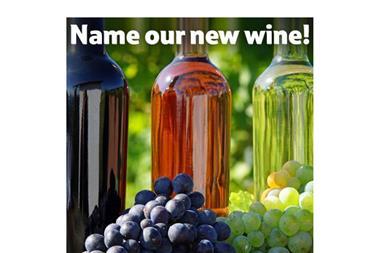


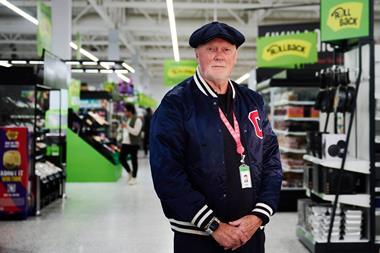
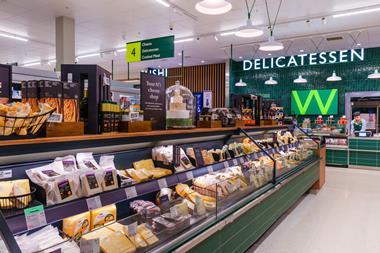


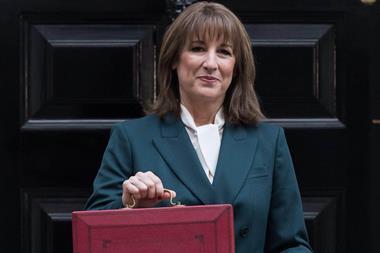
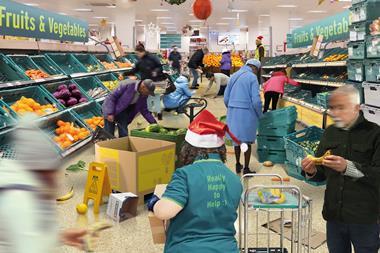
No comments yet